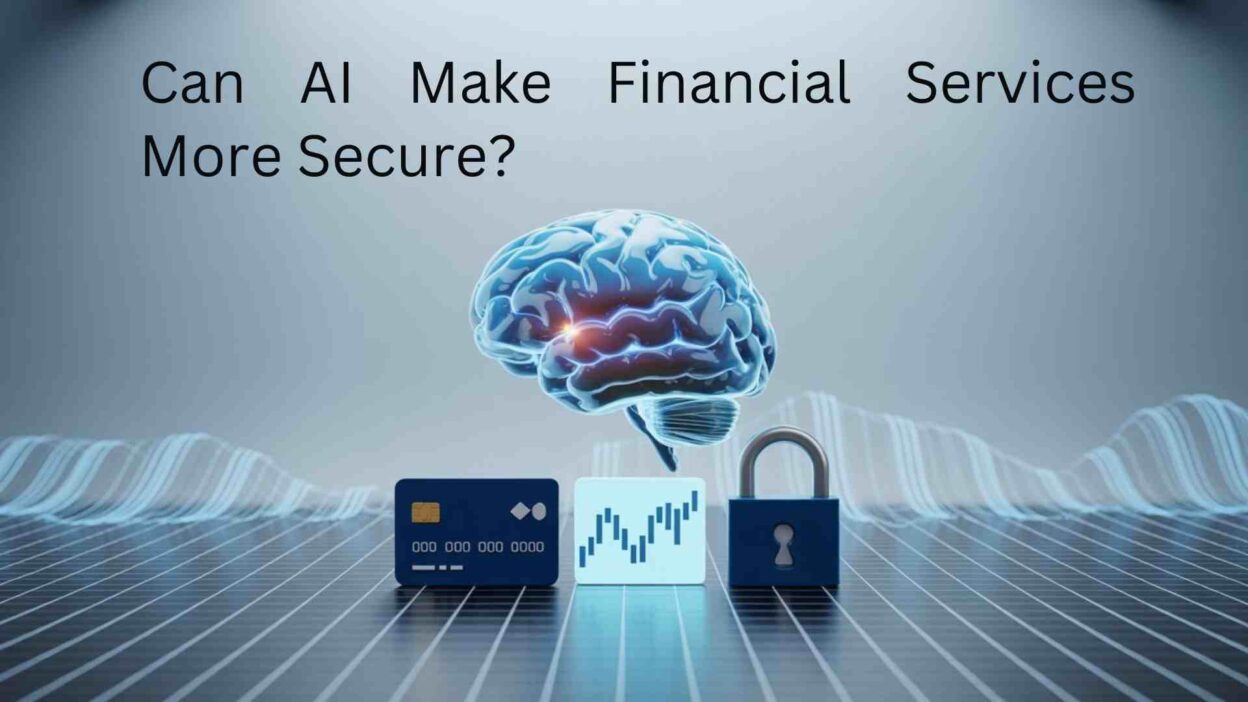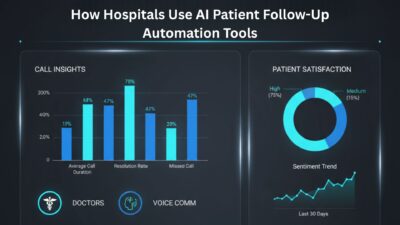TL;DR Financial institutions face unprecedented threats today. Cyberattacks target banks relentlessly. Fraudsters develop sophisticated schemes constantly. Customer data becomes more valuable yearly. Traditional security measures struggle to keep pace. Digital transactions multiply exponentially worldwide.
Table of Contents
Banks lose billions to fraud annually. Customer trust erodes with each breach. Regulatory penalties impose heavy costs. Reputation damage lasts for years. Security teams feel overwhelmed daily. Something must change dramatically.
Artificial intelligence offers powerful protection now. Smart systems detect threats instantly. Machine learning identifies unusual patterns. Automated defenses respond immediately. AI for secure banking transactions transforms financial safety. AI in cybersecurity for financial institutions creates robust shields.
The stakes have never been higher. Mobile banking grows exponentially. Digital wallets replace physical cards. Cryptocurrency adoption accelerates rapidly. Online lending expands globally. Attack surfaces increase constantly.
Understanding Modern Financial Security Threats
Criminals target financial systems aggressively. Attack methods evolve continuously. Technology creates new vulnerabilities. Bad actors share tactics globally. Defense becomes increasingly complex. Understanding threats proves essential.
The Growing Sophistication of Cyber Attacks
Hackers employ advanced techniques now. Social engineering tricks users easily. Phishing emails appear completely legitimate. Malware hides in trusted applications. Ransomware locks critical systems. Zero-day exploits strike without warning.
Nation-state actors target infrastructure deliberately. Organized crime syndicates operate globally. Insider threats compromise systems intentionally. Script kiddies probe defenses constantly. Attack vectors multiply daily. No institution remains immune.
AI for secure banking transactions becomes necessary. Traditional defenses react too slowly. Rule-based systems miss sophisticated attacks. Static security measures fail quickly. Adaptive protection proves essential. Intelligence must fight intelligence.
Common Fraud Schemes Targeting Banks
Identity theft happens millions of times yearly. Account takeover fraud drains balances overnight. Card-not-present fraud affects online purchases. Wire transfer fraud redirects legitimate payments. Loan application fraud creates false identities. Check fraud manipulates digital images.
Synthetic identity fraud combines real and fake information. Application fraud submits false documentation. Refund fraud exploits return policies. Chargeback fraud abuses dispute processes. Money laundering disguises illegal funds. Schemes grow more creative constantly.
Detection requires constant vigilance. Fraudsters adapt to security measures. Patterns change unpredictably. Volume overwhelms human analysts. Speed determines success rates. Automation becomes mandatory.
Regulatory Compliance Pressures
Financial regulations are tightened continuously. Data protection laws impose strict requirements. Know Your Customer rules demand verification. Anti-money laundering standards require monitoring. Privacy regulations protect consumer information. Compliance costs escalate yearly.
GDPR mandates data handling protocols. CCPA establishes consumer rights. PCI DSS secures payment data. SOX requires financial reporting accuracy. Basel III sets capital requirements. Violations carry severe penalties.
AI in cybersecurity for financial institutions helps meet requirements. Automated monitoring ensures compliance. Documentation is generated automatically. Audit trails are maintained comprehensively. Reporting happens in real-time. Violations are prevented proactively.
How AI Transforms Financial Security
Artificial intelligence revolutionizes protection methods. Machine learning analyzes billions of transactions. Neural networks identify complex patterns. Deep learning detects subtle anomalies. Natural language processing understands communications. Computer vision verifies documents.
Traditional security reacts to known threats. AI predicts and prevents unknown dangers. Static rules apply uniformly. Intelligent systems adapt dynamically. Human analysis has limitations. AI scales infinitely.
Real-Time Transaction Monitoring
Every transaction generates data points. Purchase amounts vary significantly. Merchant categories differ widely. Geographic locations change constantly. Time patterns establish baselines. Device fingerprints identify users.
AI for secure banking transactions analyzes everything instantly. Algorithms evaluate risk scores continuously. Suspicious activities flag immediately. Legitimate transactions are approved seamlessly. False positives decrease dramatically. Customer friction is minimized substantially.
Machine learning models train on historical data. Fraud patterns emerge clearly. Normal behavior is established precisely. Deviations are detected instantly. Confidence scores are assigned accurately. Decisions happen in milliseconds.
Velocity checks monitor transaction frequency. Location analysis verifies geographic consistency. Device intelligence confirms authorized access. Behavioral biometrics validate user identity. Network analysis reveals coordinated attacks. Everything connects intelligently.
Behavioral Analytics and Pattern Recognition
Customers develop consistent habits. Login times follow patterns. Transaction types remain predictable. Spending amounts stay within ranges. Geographic locations cluster logically. Devices remain relatively constant.
AI in cybersecurity for financial institutions learns individual behaviors. Baselines are established for each customer. Normal activities are defined clearly. Unusual actions trigger alerts. Account takeovers are detected immediately. Personalized protection personalizes completely.
Machine learning identifies micro-patterns humans miss. Subtle changes indicate potential fraud. Gradual escalations reveal testing attempts. Coordinated activities expose organized schemes. Relationship networks are comprehensively. Insights generate continuously.
Clustering algorithms group similar behaviors. Anomaly detection identifies outliers. Time-series analysis tracks changes. Predictive models forecast risks. Ensemble methods combine multiple approaches. Accuracy improves constantly.
Advanced Threat Detection
Cyber threats manifest in countless ways. Network intrusions probe defenses. Malware infiltrates systems. DDoS attacks overwhelm infrastructure. SQL injections compromise databases. Cross-site scripting exploits vulnerabilities.
AI monitors network traffic continuously. Unusual patterns flag instantly. Malicious code is identified automatically. Attack signatures are recognized immediately. Zero-day threats are detected through behavior. Response triggers automatically.
AI for secure banking transactions protects multiple layers. Endpoint security monitors devices. Network security guards’ infrastructure. Application security protects software. Data security encrypts information. Identity security verifies users.
Threat intelligence feeds update constantly. Global attack data shares instantly. Patch vulnerabilities proactively. Defenses adapt to new tactics. Security posture strengthens continuously. Protection evolves relentlessly.
Key AI Technologies Securing Finance
Multiple technologies work together powerfully. Each serves specific purposes. Integration creates comprehensive protection. AI in cybersecurity for financial institutions employs diverse methods. Understanding capabilities helps appreciation.
Machine Learning Algorithms
Supervised learning trains on labeled data. Historical fraud examples teach systems. Classification models predict fraud likelihood. Regression models estimate risk scores. Decision trees explain reasoning clearly. Random forests improve accuracy significantly.
Unsupervised learning discovers hidden patterns. Clustering groups of similar transactions. Anomaly detection finds unusual activities. Dimensionality reduction simplifies analysis. Association rules reveal relationships. Insights emerge without labels.
Reinforcement learning optimizes decisions continuously. Systems learn from outcomes. Successful detections are rewarded positively. Fraudsters should be penalized appropriately. Strategies improve through experience. Performance maximizes over time.
Deep learning tackles complex problems. Neural networks process vast data. Convolutional networks analyze images. Recurrent networks understand sequences. Transformers process language naturally. Accuracy reaches remarkable levels.
Natural Language Processing
Fraudsters communicate electronically constantly. Phishing emails deceive recipients. Social engineering messages manipulate victims. Customer complaints reveal problems. Support tickets indicate issues. Text contains valuable intelligence.
AI for secure banking transactions analyzes communications comprehensively. Sentiment analysis gauges emotions. Intent classification identifies purposes. Entity extraction finds key information. Topic modeling discovers themes. Language patterns reveal deception.
Chatbot interactions monitor for manipulation. Email filters catch phishing attempts. Social media monitoring detects threats. Document analysis verifies authenticity. Contract review ensures compliance. Everything processes automatically.
Computer Vision Applications
Documents require constant verification. Checks need examination. Identification cards require validation. Signatures need authentication. Receipts demand verification. Visual inspection proves essential.
Computer vision automates document processing. OCR extracts text accurately. Image classification identifies document types. Object detection locates key elements. Face recognition verifies identities. Signature matching confirms authenticity.
AI in cybersecurity for financial institutions validates visually. Fake documents are detected automatically. Altered images are instantly. Deepfakes are recognized accurately. Forgeries flag immediately. Fraud prevention strengthens significantly.
ATM security employs vision systems. Card skimmers are detected automatically. Suspicious behaviors are identified quickly. Criminal activities recorded clearly. Evidence is captured comprehensively. Security improves dramatically.
Biometric Authentication
Passwords prove increasingly inadequate. Credentials are stolen easily. Reuse creates vulnerabilities. Complexity frustrates users. Resets burden support teams. Better authentication becomes necessary.
Biometrics provide stronger security. Fingerprints uniquely identify individuals. Facial recognition verifies instantly. Voice patterns confirm identity. Iris scans authenticate accurately. Behavioral biometrics analyzes naturally.
AI for secure banking transactions enables advanced biometrics. Multi-factor authentication combines methods. Liveness detection prevents spoofing. Continuous authentication monitors sessions. Risk-based authentication adapts requirements. Access controls intelligently.
Mobile banking leverages biometrics extensively. Touch ID unlocks accounts. Face ID confirms transactions. Voice commands authenticate users. Typing patterns are verified continuously. Security strengthens without friction.
Real-World Applications Across Banking
AI deployment happens across financial services. Every department benefits significantly. Customer experience improves simultaneously. AI in cybersecurity for financial institutions protects comprehensively. Examples demonstrate value clearly.
Fraud Prevention in Payment Processing
Credit card fraud costs billions annually. Card-not-present transactions risk the highest. Stolen credentials purchase merchandise. Account takeover drains funds. Merchant compromise exposes millions. Prevention saves enormous amounts.
AI analyzes payment requests instantly. Risk scores are calculated in real-time. High-risk transactions blocked automatically. Medium-risk transactions challenge additionally. Low-risk transactions approve seamlessly. Customer experience is optimized perfectly.
Adaptive authentication applies intelligently. Familiar purchases proceed smoothly. Unusual transactions require verification. Large amounts demand confirmation. Foreign transactions need validation. Security balances with convenience.
Merchant fraud detection protects businesses. Unusual transaction patterns flag quickly. Velocity anomalies trigger reviews. Return rate spikes indicate problems. Chargeback ratios monitored carefully. Risk management improves substantially.
Account Takeover Protection
Criminals steal credentials constantly. Phishing captures login information. Data breaches expose passwords. Credential stuffing tests combinations. Social engineering tricks users. Account security proves critical.
AI for secure banking transactions detects takeovers immediately. Login patterns are monitored continuously. Device fingerprints verify consistency. Geographic locations check logically. Behavioral biometrics authenticate constantly. Unusual activities alert instantly.
Account recovery requests are scrutinized carefully. Identity verification strengthens substantially. Knowledge-based authentication supplements. Document verification requires. Out-of-band confirmation demands. Multi-factor authentication mandates.
Post-login monitoring continues vigilantly. Navigation patterns are tracked carefully. Transaction behaviors are analyzed constantly. Setting changes review thoroughly. Beneficiary additions are scrutinized closely. Suspicious activities are blocked immediately.
Anti-Money Laundering Compliance
Money laundering disguises illegal proceeds. Structured transactions avoid reporting. Shell companies obscure ownership. Trade-based schemes hide transfers. Cash businesses facilitate washing. Detection proves extremely challenging.
AI in cybersecurity for financial institutions monitors comprehensively. Transaction patterns are analyzed holistically. Network graphs reveal relationships. Unusual flows flag automatically. Structuring attempts are detected instantly. Report suspicious activities promptly.
Customer due diligence has changed dramatically. Risk profiling happens automatically. Enhanced due diligence triggers appropriately. Ongoing monitoring continues perpetually. Adverse media screening happens constantly. Compliance improves significantly.
Regulatory reporting is complete. Suspicious activity reports are generated automatically. Currency transaction reports file accurately. OFAC screening happens continuously. Sanctions lists are checked constantly. Compliance burden reduces substantially.
Credit Risk Assessment
Lending involves inherent risks. Borrowers default sometimes. Economic conditions change unpredictably. Income verification proves challenging. Credit scores provide limited insight. Risk assessment needs improvement.
AI analyzes alternative data comprehensively. Bank account behavior reveals patterns. Utility payment history indicates reliability. Rent payment records demonstrate consistency. Employment stability suggests security. Social connections provide context.
AI for secure banking transactions evaluates applications thoroughly. Creditworthiness scores accurately. Default probability is calculated precisely. Optimal terms are determined intelligently. Approval decisions are made fairly. Lending democratizes appropriately.
Portfolio monitoring continues after origination. Payment behaviors are tracked carefully. Financial stress indicators watch closely. Early warning signs detected quickly. Intervention happens proactively. Losses are minimized substantially.
Benefits Beyond Security Enhancement
AI delivers multiple advantages simultaneously. Security improves dramatically, obviously. Other benefits emerge naturally. AI in cybersecurity for financial institutions creates comprehensive value. Organizations gain competitive advantages.
Operational Efficiency Improvements
Manual reviews consume enormous time. Analysts examine alerts individually. False positives waste resources. True threats need a quick response. Workload overwhelms teams constantly. Efficiency suffers significantly.
Automation handles routine tasks. Alert prioritization happens intelligently. False positives have reduced dramatically. Analysts focus on complex cases. Productivity multiplies substantially. Costs decrease significantly.
Investigation tools accelerate work. Data aggregates automatically. Patterns are visualized clearly. Evidence is compiled systematically. Reports generate instantly. Case resolution accelerates dramatically.
Enhanced Customer Experience
Security measures often frustrate customers. Authentication steps annoy users. Transaction declines embarrass publicly. Account freezes are inconvenient. Support calls consume time. Satisfaction suffers consequently.
AI for secure banking transactions balances perfectly. Legitimate customers experience minimal friction. Transactions approve seamlessly. Authentication happens invisibly. Convenience improves dramatically. Satisfaction increases substantially.
Personalization enhances experiences further. Relevant offers are presented timely. Proactive alerts inform helpfully. Financial insights provide value. Advice customizes individually. Relationships deepen meaningfully.
Reduced False Positives
Traditional systems trigger excessively. Legitimate transactions decline frequently. Customers contact support constantly. Manual reviews overwhelm analysts. Frustration affects everyone. Resources are wasted significantly.
AI in cybersecurity for financial institutions reduces false alarms dramatically. Sophisticated algorithms understand context. Learning improves accuracy continuously. Legitimate patterns are recognized precisely. Fraud indicators are identified accurately. Balance is achieved optimally.
Confidence scores guide responses. High-confidence frauds are blocked immediately. Low-confidence alerts monitor carefully. Medium-confidence cases are reviewed manually. Resources are allocated efficiently. Effectiveness maximizes completely.
Competitive Differentiation
Security breaches damage reputations severely. Customers abandon compromised institutions. Market share shifts to secure alternatives. Brand value erodes quickly. Recovery takes years. Prevention proves essential.
Strong security attracts customers. Trust builds competitive advantages. Premium pricing is justified through protection. Customer retention improves significantly. Market position strengthens substantially. Growth accelerates naturally.
Innovation demonstrates leadership. Technology adoption signals modernity. Customer-centric approaches resonate strongly. Forward-thinking attracts talent. Partners prefer secure institutions. Success compounds continuously.
Implementation Challenges and Solutions
AI deployment faces obstacles inevitably. Technical challenges arise regularly. Organizational resistance appears frequently. Regulatory concerns need addressing. Budget limitations constrain projects. Solutions exist for challenges.
Data Quality and Availability
AI requires substantial data. Historical transactions provide training. Fraud examples teach patterns. Customer behaviors establish baselines. Quality impacts effectiveness directly. Incomplete data limits accuracy.
Data collection strategies are implemented systematically. Transaction histories aggregate comprehensively. Customer interactions are captured thoroughly. External data sources integrate. Fraud reports are documented carefully. Volume accumulates steadily.
Data cleaning processes run regularly. Duplicates are removed automatically. Errors are corrected systematically. Inconsistencies are resolved appropriately. Standards are enforced uniformly. Quality improves continuously.
AI for secure banking transactions demands diverse data. Payment information includes. Account behaviors are incorporated thoroughly. Device data is captured completely. Geographic information adds context. Richness improves performance.
Model Training and Accuracy
Initial models require extensive training. Historical fraud examples provide lessons. Normal transaction patterns teach baselines. Edge cases need special attention. Class imbalance creates challenges. Accuracy develops gradually.
Training methodologies are applied rigorously. Cross-validation prevents overfitting. Hyperparameter tuning optimizes performance. Feature engineering improves predictions. Ensemble methods combine strengths. Accuracy maximizes systematically.
Continuous learning maintains effectiveness. New fraud tactics update models. Customer behavior changes incorporate. Market conditions reflect appropriately. Performance monitoring happens constantly. Adaptation occurs automatically.
Testing is validated thoroughly before deployment. Real-world data tests extensively. Performance metrics are measured carefully. Error analysis identifies weaknesses. Improvements are implemented continuously. Confidence builds systematically.
Integration with Legacy Systems
Financial institutions run established infrastructure. Core banking systems have operated for decades. Payment processors handle millions of transactions. Risk management platforms track exposures. Everything connects complexly. Integration proves challenging.
AI in cybersecurity for financial institutions requires connectivity. APIs enable data exchange. Middleware coordinates systems. Real-time streaming processes continuously. Batch processing handles bulk data. Architects design carefully.
Phased implementation reduces risk. Pilot programs test concepts. Limited deployments validate approaches. Gradual expansion manages change. Full integration will eventually. Disruption minimizes throughout.
Legacy modernization happens when necessary. Cloud migration enables scalability. Microservices improve flexibility. Containerization simplifies deployment. DevOps accelerates development. Technology stacks modernize appropriately.
Regulatory and Compliance Considerations
Financial regulation governs AI usage. Model explainability demands understanding. Decision transparency requires documentation. Bias prevention mandates fairness. Data privacy protects consumers. Compliance proves complex.
Explainable AI methods are developed specifically. Decision trees show logic clearly. LIME explains predictions locally. SHAP values attribute importance. Attention mechanisms highlight focus. Transparency increases substantially.
Bias testing conducts regularly. Protected classes analyze carefully. Outcome disparities measure precisely. Fairness metrics calculate accurately. Corrections implement promptly. Equity ensures consistently.
Documentation maintains comprehensively. Model development records thoroughly. Training data documents completely. Performance metrics track carefully. Audit trails preserve permanently. Compliance demonstrates convincingly.
Future Developments in AI Financial Security
Technology advances relentlessly. Capabilities expand continuously. AI for secure banking transactions will evolve dramatically. New threats will emerge constantly. Defenses will adapt accordingly. The future promises much.
Quantum Computing Implications
Quantum computers threaten current encryption. Public key cryptography becomes vulnerable. Blockchain security faces challenges. Financial transactions risk exposure. Preparation becomes urgent. Solutions develop actively.
Post-quantum cryptography develops rapidly. Quantum-resistant algorithms test thoroughly. Migration strategies plan carefully. Implementation timelines accelerate. Security maintains despite threats. Protection continues uninterrupted.
Quantum machine learning may enhance security. Processing power increases exponentially. Pattern recognition improves dramatically. Threat detection accelerates significantly. Capabilities expand tremendously. Potential seems unlimited.
Federated Learning for Privacy
Data sharing raises privacy concerns. Regulations restrict information movement. Institutions compete while collaborating. Collective intelligence benefits everyone. Privacy-preserving methods enable cooperation. Innovation addresses challenges.
AI in cybersecurity for financial institutions employs federated learning. Models train on decentralized data. Information stays locally always. Aggregated insights share safely. Privacy preserves completely. Collaboration strengthens security industry-wide.
Fraud patterns detect across institutions. Attack intelligence shares anonymously. Threat detection improves collectively. Bad actors face united defenses. Everyone benefits mutually. Security strengthens dramatically.
Autonomous Security Systems
Human oversight remains necessary currently. Analysts review flagged transactions. Managers approve blocking decisions. Escalations require judgment. Automation has limits. Full autonomy approaches gradually.
Self-learning systems will operate independently. Threats detect and neutralize automatically. Defenses adapt without intervention. Strategies optimize continuously. Performance improves autonomously. Human supervision reduces steadily.
AI for secure banking transactions will become fully autonomous. Real-time protection operates constantly. Attacks repel instantly. Vulnerabilities patch automatically. Security maintains perpetually. Human involvement minimizes appropriately.
Enhanced Personalization and Context
Security will understand context deeply. Customer circumstances will influence decisions. Life events will adjust baselines. Relationship history will inform responses. Trust will personalize appropriately. Security will feel invisible.
Vacation modes will adjust expectations. Moving updates will reset patterns. Major purchases will prepare systems. Life changes will communicate proactively. Context will eliminate friction. Experience will optimize perfectly.
Frequently Asked Questions
How does AI for secure banking transactions differ from traditional security?
Traditional security uses static rules. Systems check predefined conditions. Threats detect based on known patterns. Responses follow programmed logic. Adaptation requires manual updates. Scale limitations exist clearly.
AI learns continuously from data. Patterns emerge through analysis. Unknown threats detect through anomaly. Responses optimize automatically. Adaptation happens in real-time. Scale expands infinitely.
Can AI completely eliminate financial fraud?
Complete elimination remains unrealistic. Criminals adapt constantly. New schemes emerge regularly. Zero-day attacks surprise defenses. Human error creates vulnerabilities. Perfect security proves impossible.
AI dramatically reduces fraud substantially. Detection rates improve significantly. Response times decrease dramatically. Losses minimize substantially. Prevention strengthens continuously. Security approaches maximum practical levels.
How does AI in cybersecurity for financial institutions protect customer privacy?
Privacy protection proves paramount. Data encryption secures information. Access controls limit exposure. Anonymization protects identities. Aggregation prevents individual tracking. Compliance ensures strictly.
AI analyzes patterns not personal details. Risk scores calculate without revealing data. Decisions make without storing unnecessarily. Retention limits apply strictly. Rights respect completely. Privacy maintains throughout.
How expensive is implementing AI security systems?
Costs vary significantly. Enterprise solutions require substantial investment. Cloud platforms offer scalability. Subscription models spread expenses. Open-source options reduce costs. ROI justifies expenditure.
Initial implementation demands resources. Integration requires expertise. Training consumes time. Testing needs thoroughness. Deployment takes planning. Investment proves necessary.
Ongoing costs remain manageable. Cloud computing scales economically. Automation reduces labor. Efficiency improves continuously. Fraud losses decrease dramatically. Savings exceed costs substantially.
Read More: The Role of Local Governments in Utility Planning
Conclusion

Financial security faces unprecedented challenges today. Cyber threats evolve constantly. Fraud schemes grow more sophisticated. Traditional defenses prove inadequate. Customer expectations rise continuously. Change becomes necessary.
Benefits extend beyond security improvements. Operational efficiency multiplies dramatically. Customer experiences have substantially changed. Costs decrease significantly. Competitive advantages emerge clearly. Value creation happens comprehensively.
Financial institutions must embrace AI now. Competitive pressures demand action. Customer expectations require innovation. Regulatory compliance needs automation. Security threats mandate protection. Delay creates risks unnecessarily.
AI for secure banking transactions isn’t optional anymore. The technology proves essential. Customer trust depends on security. Business success requires protection. Market position demands leadership. Investment becomes imperative.
The financial industry transforms before us. Traditional banking evolves rapidly. Digital services are increasingly available. Mobile-first approaches prevail. Customer expectations continue rising. Security must advance accordingly.
Financial security requires AI absolutely. Technology enables protection previously impossible. Intelligence fights intelligence effectively. Automation scales infinitely. Learning never stops. Security strengthens perpetually.
AI for secure banking transactions protects customers comprehensively. AI in cybersecurity for financial institutions defends assets thoroughly. Technology serves humanity ultimately. Innovation solves problems constantly. Progress benefits everyone collectively. The future looks secure.





